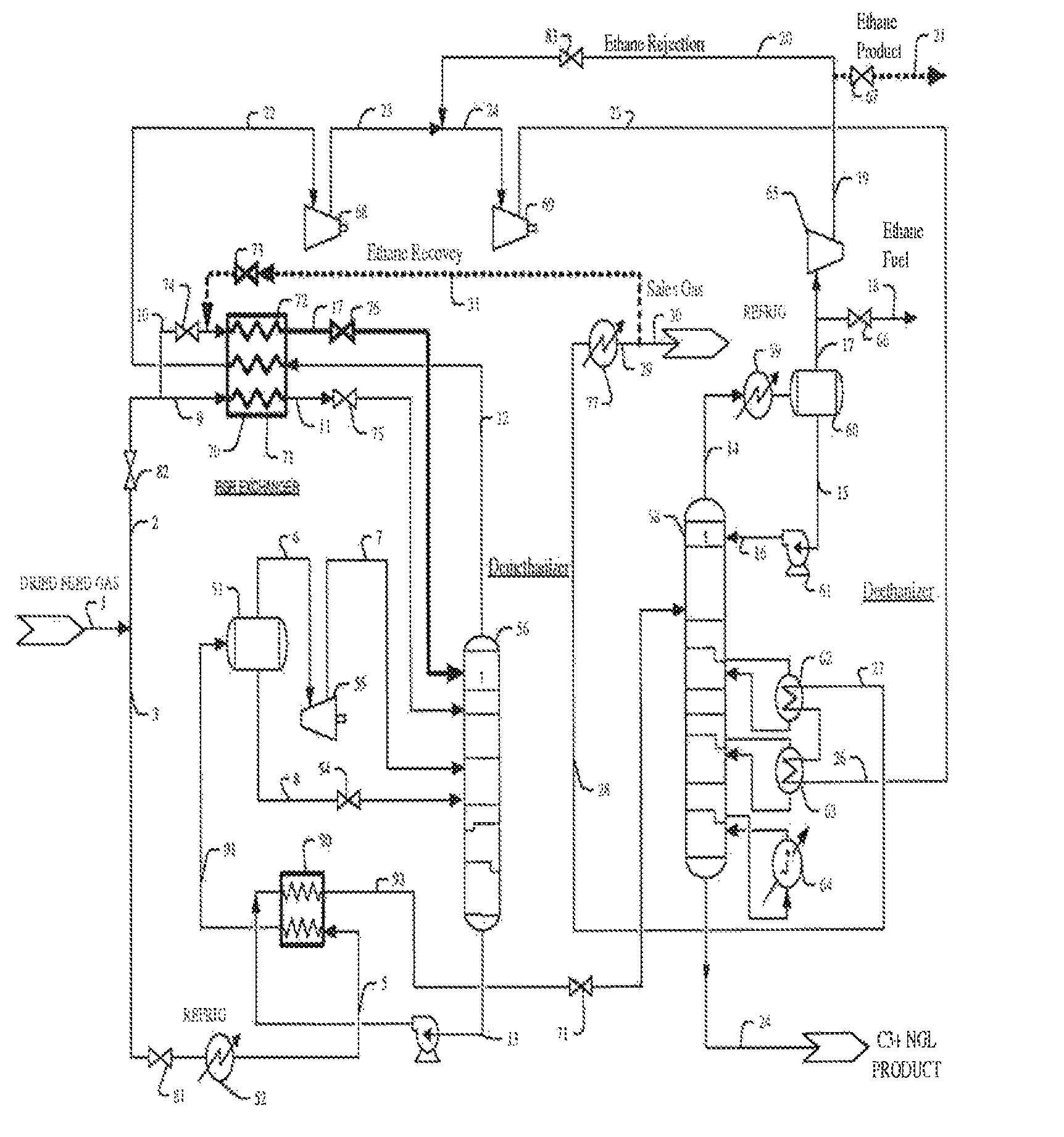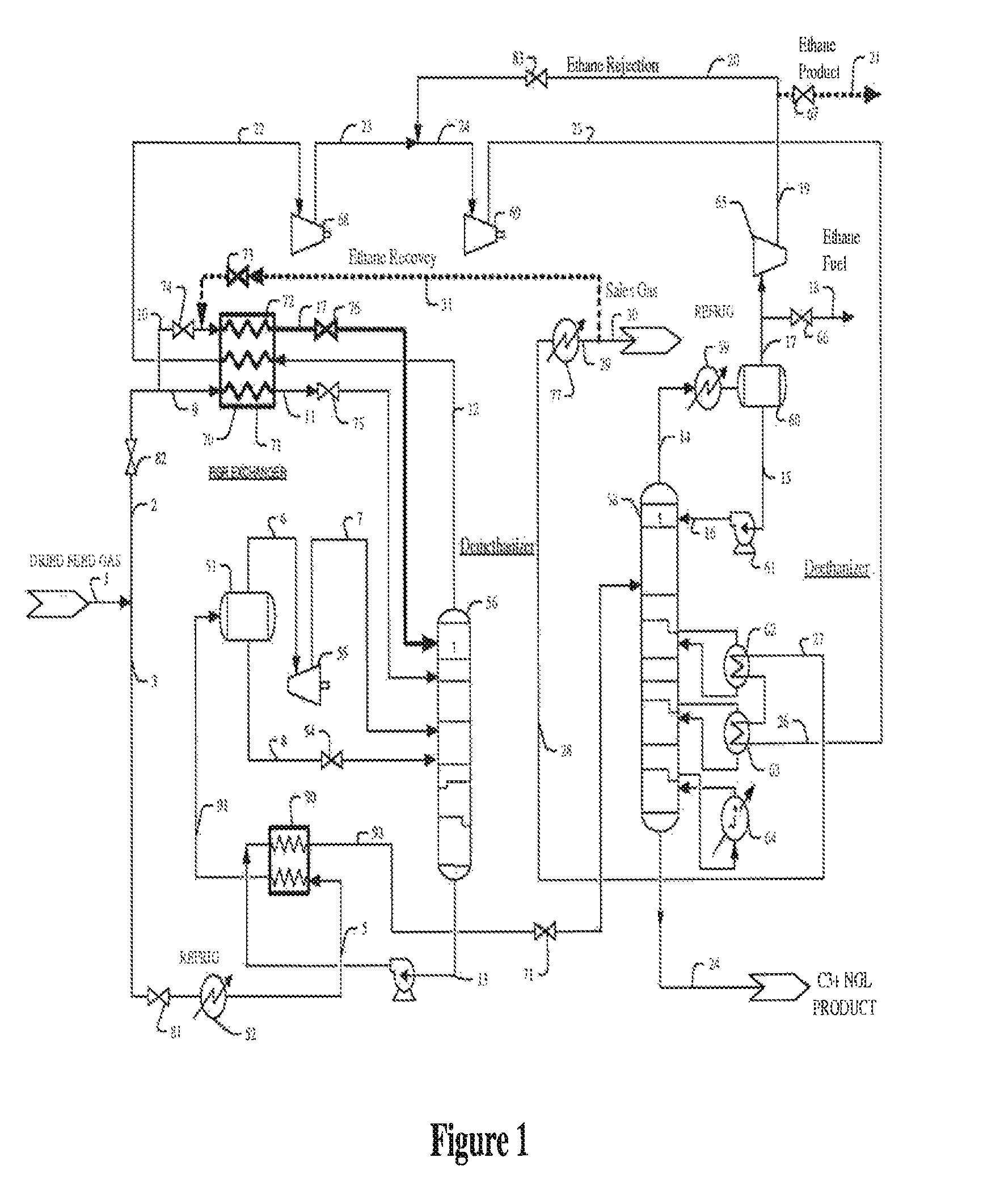Flexible NGL recovery methods and configurations
a natural gas liquid and flexible technology, applied in the field of natural gas processing, can solve the problems of propane recovery dropping to less than 90%, less heat duty of demethanizer reboiler, and often insufficient extraction of propane to produce on-spec products
- Summary
- Abstract
- Description
- Claims
- Application Information
AI Technical Summary
Benefits of technology
Problems solved by technology
Method used
Image
Examples
Embodiment Construction
[0025]The inventor has now discovered that use of a residue gas recycle exchanger that employs at least a portion of a compressed residue gas recycle and a portion of the feed gas at the plant inlet can enable high ethane recovery of over 95% while maintaining high propane recovery of at least 95%. Most typically, the residue gas recycle exchanger is also employed in ethane rejection, and in especially preferred aspects, switching valves allow the recycle gas exchanger core to be used by the feed gas, thus avoiding residue gas recycle and minimizing compression horsepower during ethane rejection.
[0026]Therefore, and viewed from another perspective, the residue gas recycle exchanger is advantageously configured to be operated in ethane rejection and ethane recovery mode using demethanizer overhead cold in both modes of operation to produce two distinct reflux streams (with the composition of the reflux streams being different between ethane recovery and ethane rejection mode). It sho...
PUM
 Login to View More
Login to View More Abstract
Description
Claims
Application Information
 Login to View More
Login to View More - R&D
- Intellectual Property
- Life Sciences
- Materials
- Tech Scout
- Unparalleled Data Quality
- Higher Quality Content
- 60% Fewer Hallucinations
Browse by: Latest US Patents, China's latest patents, Technical Efficacy Thesaurus, Application Domain, Technology Topic, Popular Technical Reports.
© 2025 PatSnap. All rights reserved.Legal|Privacy policy|Modern Slavery Act Transparency Statement|Sitemap|About US| Contact US: help@patsnap.com



